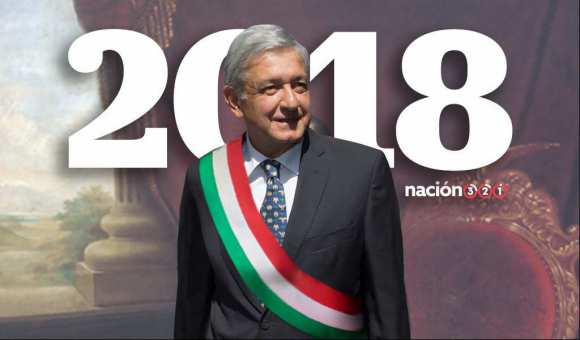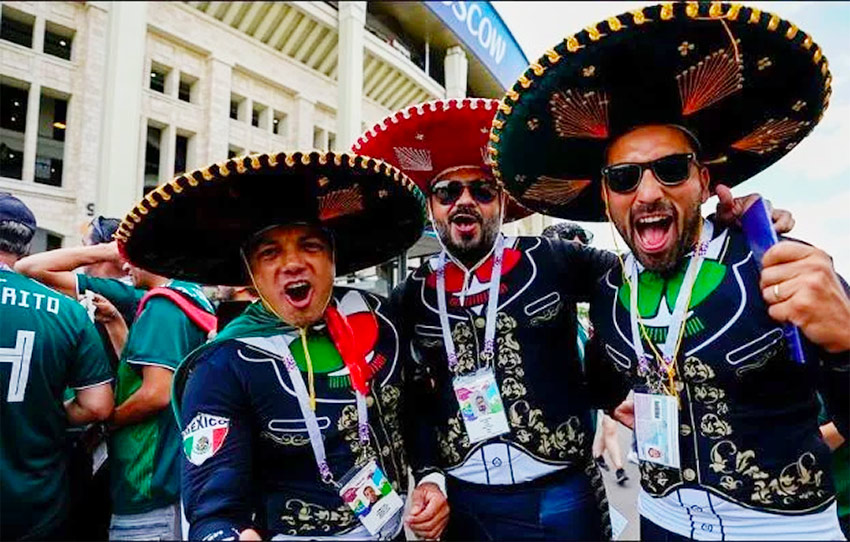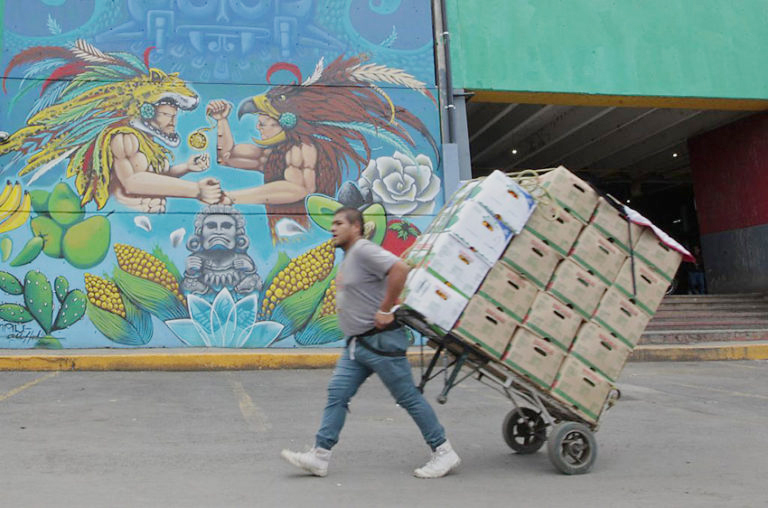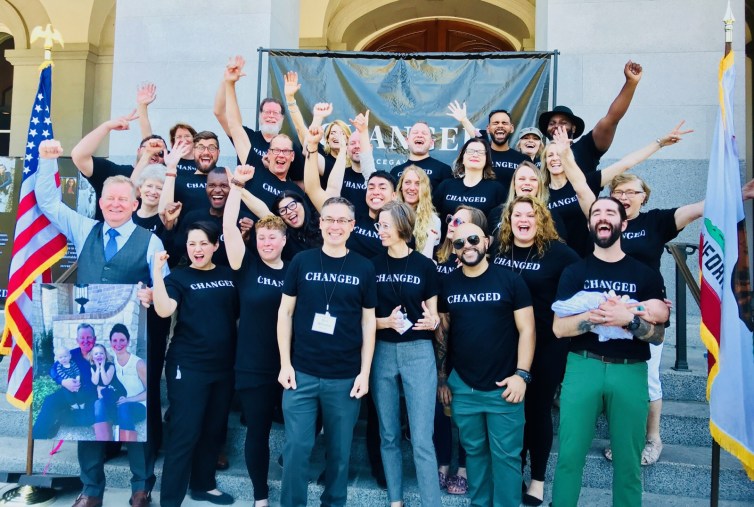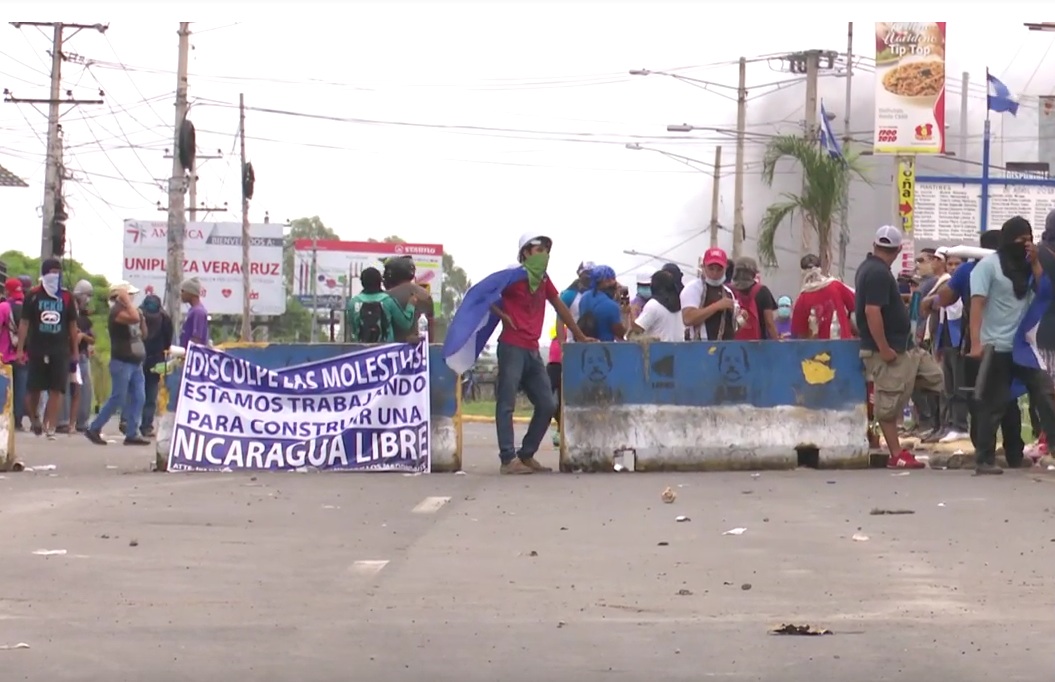Exit polls show baseball-loving nationalist who counts Jeremy Corbyn as a friend is now the new president elect
by Tom Phillips and David Agren in Mexico City
A baseball-loving left-wing nationalist who has vowed to crack down on corruption, rein in Mexico’s war on drugs and rule for the poor has been elected president of Latin America’s second-largest economy, exit polls suggested on Sunday night.
Andrés Manuel López Obrador, a silver-haired 64-year-old who is best known as Amlo and counts Labour leader Jeremy Corbyn among his friends, was set to be elected with 49 percent of the vote, according to a poll conducted by the El Financiero newspaper.
López Obrador’s closest rival, Ricardo Anaya from the National Action party (PAN), received 27 percent, the poll said, while José Antonio Meade, a career civil servant running for the Institutional Revolutionary party, or PRI, which ruled Mexico for most of last century, came in third with 18 percent.
A second exit poll, by the Mexican polling group Consulta Mitofsky, gave López Obrador between 43 percent and 49 percent, Anaya between 23 percent and 27 percent and Meade between 22 percent and 26 percent.
Immediately after those polls were released Meade conceded defeat. “We have to recognise that according to [voting] trends … Andrés Manuel López Obrador … will have the responsibility of leading the executive power and for the good of Mexico I wish him the very best of luck.”
“I will take a few days to reflect and ponder my future but you can be sure I’ll keep working for a better Mexico,” Meade added.
Soon after, Anaya also accepted Amlo’s victory. “As I said to him a few minutes ago on the phone I recognise his triumph, express my congratulations and wish him the best of luck for the good of Mexico,” he said. “The citizens wanted a change and they opted in their majority for the alternative that he represents.”
Official results were due to be announced later on Sunday night with Amlo supporters expected to flood Mexico City’s main plaza, the Zócalo, to celebrate his anticipated victory.
Exit polls also suggested the party Amlo founded in 2014 – the Movement for National Regeneration or Morena – had won at least five of nine gubernatorial races, with the winners including Mexico City’s first elected female mayor, Claudia Sheinbaum. “We won! We’ll rescue the City of Hope,” she wrote on Twitter.
Earlier in the day, Amlo, who has for months towered over his opponents in the polls, flashed a victory sign to reporters as he arrived to vote at a Mexico City polling station.
“This is a historic day,” he said, calling the vote “a plebiscite in which people will choose between more of the same or genuine change”.
As an estimated 89 million voters descended on polling stations on Sunday it became clear that Mexicans – fed up with political sleaze, soaring violence and poverty – had overwhelmingly voted for change and to reject the only two parties to hold the presidency since the end of one-party rule in 2000.
“This country is in a deep hole and he’s the only one that can pull us out of it,” Manuel Molina, a 34-year-old advertising worker, said as he voted Amlo in Mexico City’s Tacubaya neighbourhood.
Civil servant Evelyn Correa said she was backing Amlo because she was tired of corrupt and shameless politicians: “He won’t resolve everything like he promises … But we’ve tried the [other parties]. Hopefully he’s different.”
Delfina Gómez, a close Amlo ally who is running for a seat in Mexico’s senate, told the Guardian she believed corruption-weary voters were backing Amlo and Morena because they wanted “a radical transformation in the way politics is done, and in politicians themselves”.
Gómez called Amlo a thrifty, upstanding man who would lead “a government of austerity and honesty”: “He finds it shameful that someone might be flaunting their wealth whilst others are dying of hunger.”
Amlo has repeatedly pledged to make eradicating corruption the main focus of his presidency, once he is sworn in on 1 December this year. “We will get rid of … this cancer, that is destroying this country,” he vowed at his final campaign rally.
Analysts also expect him to pursue a less aggressive and less militarized approach to Mexico’s 11-old ‘war on drugs’ which has claimed an estimated 200,000 lives and is widely viewed as a calamity. During the campaign, Amlo has argued “you cannot fight violence with more violence, you cannot fight fire with fire” and proposed an amnesty designed to help low-level outlaws turn away from a life-of-crime.
Eric Olson, a Mexico and Latin America specialist from Washington’s Woodrow Wilson Centre, said he saw Mexico stepping back from regional affairs under its new leader. “Amlo is not an internationalist … we can expect him to play less of an active role in the region on Venezuela, on Nicaragua and other trouble spots.”
Olson also expected tense moments with US president Donald Trump whose family separation policy Amlo recently denounced as arrogant, racist and inhuman. “But it’s impossible for the US to walk away from Mexico or for Mexico to walk away from the US. They are joined at the hip and need to work together even if their presidents don’t like each other and don’t get along.”
Carlos Bravo, a politics expert from Mexico City’s Centre for Economic Research and Teaching, predicted President Amlo would make fighting poverty a flagship policy, just as former Brazilian president Luiz Inácio Lula da Silva did after his historic 2002 election with projects such as Bolsa Família and Zero Hunger. Under Amlo he foresaw “massive investment in social policy” which Mexico’s new president could use to show he was attacking not just poverty and inequality but also the social roots of crime and violence.
However, Bravo said the “motley coalition” behind Amlo’s election triumph was so diverse – featuring former communists, ultra-conservatives and everything in-between – that trying to guess how he might rule was a fool’s errand. “Quite frankly, right now there is a lot of uncertainty regarding what the López Obrador government will do.”
“There will be a lot of infighting [between now and his inauguration] … and the result of that infighting will be crucial in deciding how the López Obrador government is going to look and what it’s priorities are going to be,” Bravo added.
Leading members of Latin America’s left voiced hope Amlo’s election might revive the region’s rapidly ebbing ‘pink tide’. “It will signal the return of progressive winds to Latin America!” Gleisi Hoffmann, the president of Brazil’s embattled Worker’s party, predicted.
Brazil’s impeached former president Dilma Rousseff said an Amlo win would “not just be a victory for Mexico but for all of Latin America”.
Argentina’s former president, Cristina Kirchner, tweeted: “Andrés Manuel López Obrador represents hope, not just for Mexico but for the entire region.” (The Guardian).

